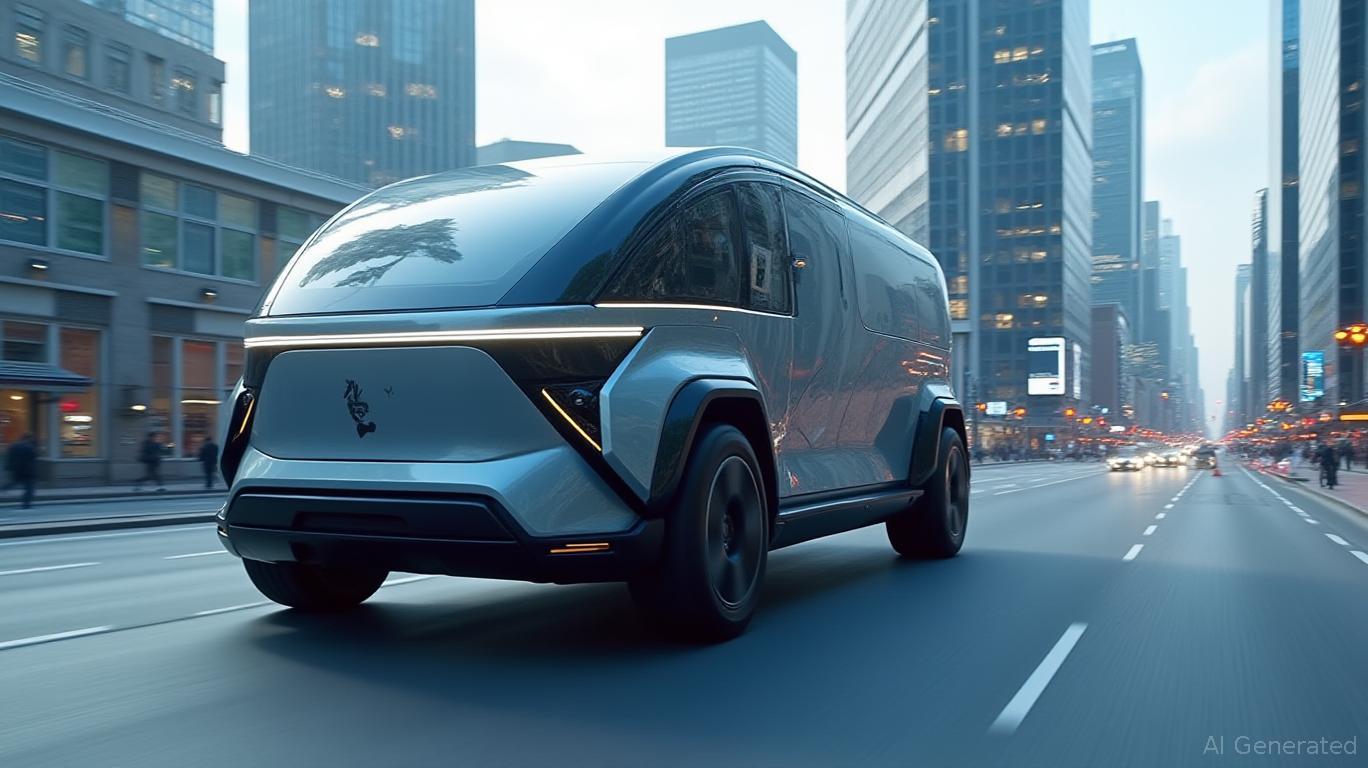Tesla's Robotaxi Crossroads: Navigating Hurdles to Dominance
Tesla's June 2025 launch of its robotaxi service in Austin, Texas, marked a bold step toward Elon Musk's vision of a driverless future. Yet, the rollout has been marred by regulatory scrutiny, technical glitches, and Waymo's entrenched lead in the autonomous vehicle (AV) race. While Tesla's near-term execution risks are undeniable, its software-driven strategy and scalability could position it for disruptive growth by 2026. For investors, the question is whether the company can turn its vision into reality—and whether the near-term turbulence obscures long-term potential.
Near-Term Execution Risks: A Rocky Start
Tesla's robotaxi deployment in Austin has faced immediate challenges. The National Highway Traffic Safety Administration (NHTSA) is investigating safety incidents, including vehicles swerving into oncoming lanes and speeding, which prompted a 2% stock dip in June. Regulatory hurdles are compounding these issues: Texas lawmakers have demanded compliance with new 2025 rules requiring autonomous vehicles to operate without human oversight—a standard Tesla's “supervised” system does not yet meet.
Meanwhile, Waymo's lead in scale and reliability is hard to ignore. The Alphabet subsidiary already operates over 1,500 autonomous vehicles in multiple U.S. cities, with 10 million paid rides to its credit. By contrast, Tesla's Austin fleet began with just 10–20 Model Y vehicles, constrained to daylight hours and simple routes. Waymo's LiDAR-based systems also outperform Tesla's camera-only approach in edge cases, such as recognizing school buses or navigating low-visibility conditions—a critical gap.
The operational backdrop adds to the strain. Tesla's Austin Gigafactory has faced production pauses and inventory buildup, with Cybertruck sales halving since 2024 despite price cuts. Gross margins dipped to 2.1% in Q1 2025, and deliveries are projected to fall 19–20% year-over-year. These headwinds suggest Tesla's core EV business is under pressure, diverting resources from its autonomous ambitions.
Long-Term Market Potential: Software as the Great Equalizer
Yet, Tesla's strengths lie in its software and scale. Unlike Waymo, which relies on fleets of dedicated AVs, Tesla can monetize its existing 2.5 million vehicles equipped with Full Self-Driving (FSD) hardware. A full transition to robotaxi mode—where cars operate autonomously without drivers—could generate $50,000+ annually per vehicle, per Musk. This “fleet-as-a-service” model, paired with Tesla's direct control over its software stack, offers a cost advantage over rivals tied to third-party suppliers.
Musk's vision also hinges on FSD's evolution. The company aims to deploy “Level 5” autonomy by late 2025, enabling vehicles to operate anywhere without human intervention. If achieved, Tesla could leapfrog Waymo's geofenced systems and establish a global network of robotaxis. Analysts at Barclays note that Tesla's software edge—bolstered by its massive data trove from real-world driving—could eventually rival Waymo's safety record.
The financial case for Tesla's long-term potential is compelling. Even a 10,000-vehicle robotaxi fleet by 2026—far below Musk's target—could add $5 billion in annual revenue. If scaled to 1 million vehicles (a stretch goal), the value could surpass $50 billion, reshaping Tesla's valuation.

Critical Milestones to Watch
Investors should monitor three key inflection points:
1. Cybercab Launch (2025 H2): Tesla's new Cybertruck-based robotaxi must prove it can operate safely at scale. Delays or further safety incidents could deepen regulatory scrutiny.
2. FSD V12 Rollout (2025): Musk claims this update will deliver “true autonomy.” Real-world performance, particularly in complex urban environments, will determine credibility.
3. NHTSA Resolution (2026): A favorable outcome to the ongoing investigation would remove a major overhang. A negative ruling could force costly software revisions or operational restrictions.
Investment Takeaway: A Speculative Buy for the Long Game
Tesla's robotaxi journey is fraught with execution risks, from regulatory pushback to Waymo's technical lead. Near-term volatility is inevitable—especially if FSD V12 underwhelms or NHTSA imposes penalties. However, the company's software-first strategy and potential to monetize its existing fleet offer a path to dominance by 2026.
For investors with a multiyear horizon, Tesla remains a speculative buy. The stock's current valuation—trading at 20x 2025 EV sales estimates—reflects skepticism around near-term challenges but leaves room for upside if autonomous milestones are met. Short-term traders may prefer to wait for clearer signals, but long-term bulls should consider accumulating shares on dips, particularly if FSD V12 delivers.
The bottom line: Tesla's robotaxi gamble is high-risk, but its software edge and Musk's relentless vision give it a fighting chance to redefine mobility. The next 12–18 months will determine whether this vision becomes reality—or another missed target in the company's ambitious history.

Comments
No comments yet